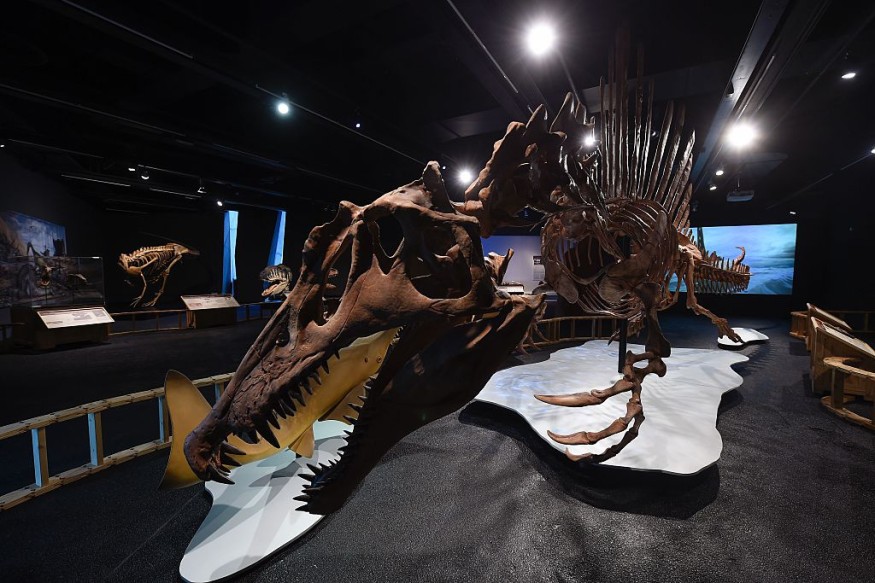A new species of the Spinosaurus dinosaur called Iberospinus natarioi was discovered by scientists in Portugal.
The recent discovery suggested that the fossil evidence found near Cabo Espichel, Portugal, in 1999 actually belongs to the I. natarioi and not from the Spinosaurus species known as Baryonyx walkeri.
For 23 years, the fossil was mistakenly identified to be from the B. walkeri dinosaur species.
The new discovery will add more understanding to one of the largest dinosaur species that has roamed the Earth during the Cretaceous Period.
Spinosaurus Dinosaur and The Cretaceous Period

Famous for the "Jurassic Park" and "Jurassic World" movie franchises, the Spinosaurus dinosaur lived approximately 125 million years ago during the Cretaceous Period.
Also known as Spinosaurus aegyptiacus, fossils of the Spinosaurus species were first unearthed in Egypt back in 1912.
In terms of Spinosaurus size, Spinosaurids had long back legs and short front legs but can grow up to nine meters long during their lifetime.
Previous research reportedly claimed these dinosaur species lived mostly in waters for the major part of their life but were also able to hunt on land, as per Phys.org.
In light of the new discovery, our understanding of the abundance of the Spinosuarus aegyptiacus species ranged not only to a single dinosaur species but also to several ones that lived on Earth until the mass extinction due to the massive Chicxulub crater from an asteroid that hit Earth 65 million years ago.
According to the Lunar and Planetary Institute, the Chicxulub crater impact site in the Yucatan Peninsula of Mexico was discovered by seven researchers from North America during fieldwork in Haiti.
The asteroid impact led to a mass extinction event, killing most of the plant and animal species at that time.
The asteroid impact and atmosphere waves from the Chicxulub crater also caused a multitude of sudden geological and climate changes, including the blockage of sunlight passing through the Earth's atmosphere.
Groundbreaking Discovery in Portugal
The new discovery of the dinosaur species was published in the peer-reviewed journal PLOS ONE on Feb. 16.
The study's authors are Octavio Mateus and Dario Estraviz-Lopez-who are both affiliated with the NOVA School of Science and Technology and Museu da Lourinha.
Both Mateus and Estraviz-Lopez believed that the Spinosaurids were one of the biggest carnivores on the planet and they lived in Africa, the Great Britain, and Europe during the Cretaceous Period.
In 1999, the fossils were first discovered in the Bahariya Oasis-located in the western desert of Egypt. The fossils consist of only teeth and bones from the dinosaur's partial skeleton.
The discovery in Egypt indicated the dinosaur was a semi-aquatic apex predator, as per Carnegie Museum of Natural History.
The new Spinosaurus species, I. natarioi, was derived from Portugal's Iberian Peninsula where it was discovered-and derived from the name of Carlos Natario, an archeologist who first discovered the dinosaur fossil evidence of the I. natarioi.
Related article : 5 Terrible Mass Extinction Events That Shaped Earth's History
© 2025 NatureWorldNews.com All rights reserved. Do not reproduce without permission.





